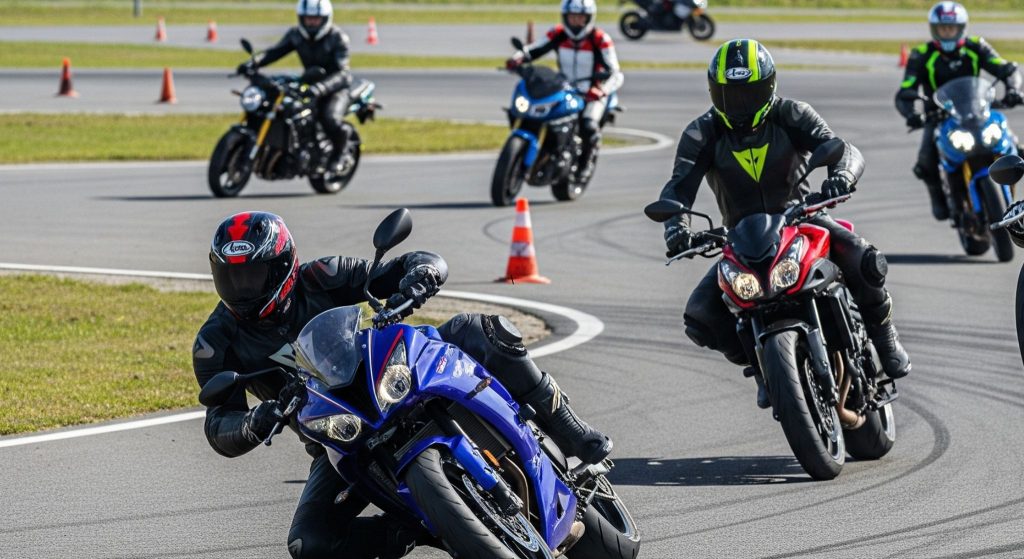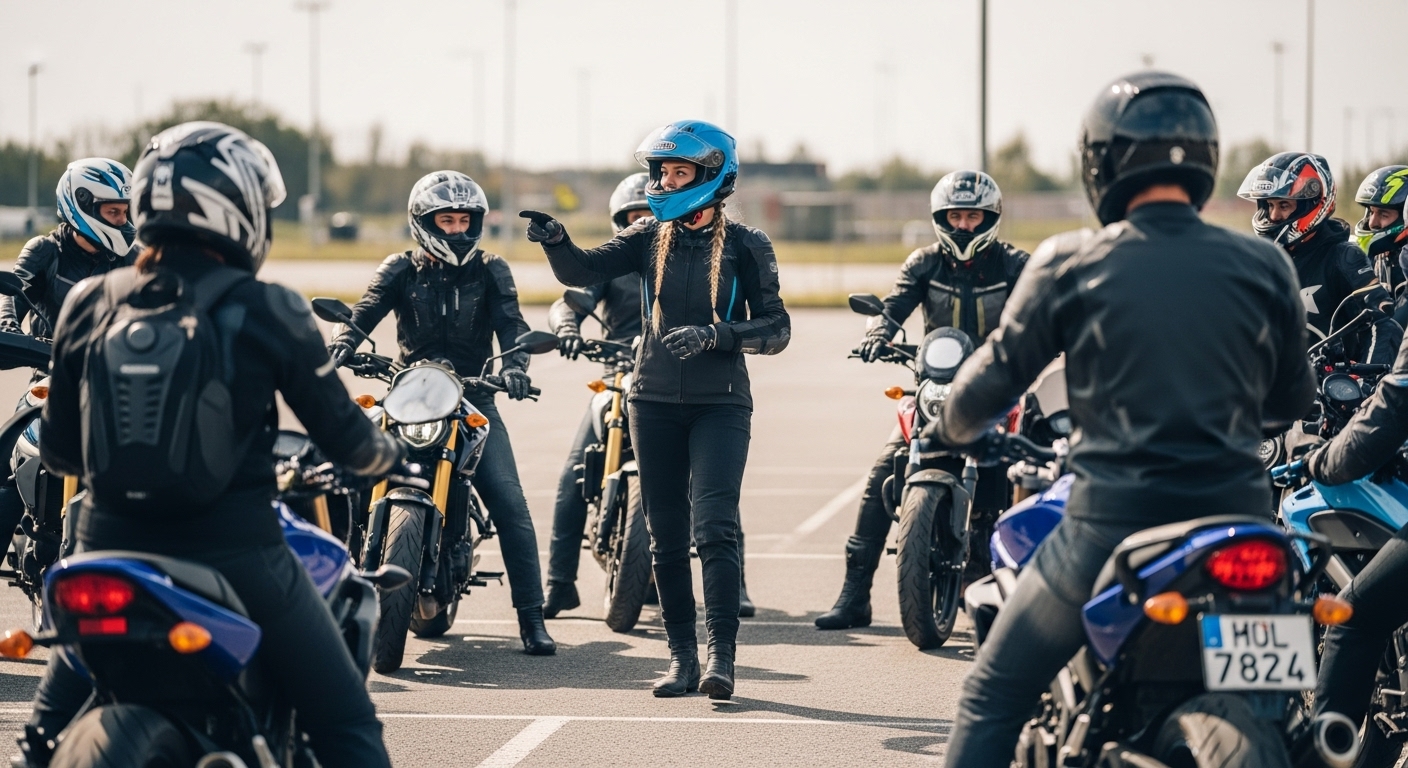Riding a motorcycle safely isn’t just about how well you handle the throttle or lean into corners.
It’s about what’s happening in your head.
Every skilled rider knows that strong mental habits make all the difference between a smooth, safe ride and a risky one. According to the Montana Motorcycle Manual, the right mindset is just as important as the right gear.
Here are the primary mental skills every motorcyclist should build to ride safely, confidently, and in control—no matter what the Montana roads bring your way.
1. Situational Awareness – Seeing Everything, All the Time
Situational awareness is your first line of defense on a motorcycle.
It means constantly scanning the road ahead, checking your mirrors, and paying attention to what’s happening in every direction—not just what’s right in front of you.
Good riders spot danger before it becomes a problem. They read traffic flow, notice road surface changes, and anticipate when another vehicle might drift into their lane.
The Motorcycle Safety Foundation (MSF) calls this strategy “SEE” — Search, Evaluate, Execute.
It teaches riders to look ahead, predict risks, and plan the next move before a threat appears.
Montana riders especially need sharp awareness. Roads can change quickly—from open highways to winding mountain passes—and wildlife or weather can catch you off guard.
Tip: Train your eyes to keep scanning and your mind to stay alert. Awareness is a skill you sharpen with every ride.

2. Concentration and Focus – Stay Fully Present
When you’re on a motorcycle, distractions are dangerous.
Even a second of lost focus can put you in real danger. Unlike driving a car, there’s no room for multitasking.
The Montana Motorcycle Manual – Mental Strategies explains that riders should “ride in the moment.” That means leaving daily stress, frustration, and phone notifications behind when you start the engine.
Stay tuned to your environment—the feel of the bike, the sound of the tires, and what’s happening around you.
The VOOM Insurance Blog on Mental Focus reminds riders that mental clarity is key to safe reactions. When your mind wanders, your reaction time suffers.
Tip: Before every ride, take a few deep breaths and focus only on the road ahead. The more present you are, the safer your ride will be.
3. Judgment and Decision-Making – Think Fast, Stay Calm
Good judgment separates confident riders from careless ones.
Every time you ride, you make hundreds of small decisions—when to change lanes, how close to follow traffic, when to brake or accelerate.
According to the Motorcycle Safety Foundation’s If You Ride A Motorcycle guide, smart decisions come from training and calm thinking, not from reacting on instinct.
When you encounter a surprise—like gravel on the road or a car cutting you off—it’s your judgment that determines what happens next. A skilled rider doesn’t panic; they slow down, look for a safe escape path, and control the situation.
Tip: Take a Montana Motorcycle Safety Foundation (MMSF) course to build these decision-making reflexes under professional supervision.
4. Anticipation and Proactive Riding – Always One Step Ahead
Great riders don’t react—they predict.
Anticipation is about thinking “what if” long before something happens.
What if that car ahead doesn’t see you? What if there’s ice around the bend? What if a deer crosses the road at dusk?
This forward-thinking mindset helps you stay calm and avoid panic reactions. The GPI Moto guide on mental preparation calls this “proactive riding”—seeing situations before they happen and being ready to act.
In Montana, this means planning for changing terrain, variable weather, and sudden wildlife crossings. Riders who plan ahead rarely get surprised.
Tip: Always have an escape route in mind. Assume that every driver doesn’t see you—and you’ll always be ready to react safely.

5. Mental Discipline and Self-Awareness – Know Yourself, Ride Within Limits
Every ride starts with you—your mood, your energy, and your awareness.
Mental discipline means being honest about your limits and having the self-control to stop riding when you’re tired, angry, or distracted.
The Montana Motorcycle Manual reminds riders to “ride within your abilities.” That doesn’t just mean your technical skills—it means your mental readiness too.
If you’re unfocused, upset, or exhausted, your reaction time slows, and your judgment weakens.
The best riders know when to rest and when to ride.
Tip: Before every ride, do a quick “mental check.” Ask yourself—am I calm, alert, and focused? If not, wait. Your safety is worth more than the trip.
6. Bringing It All Together – Train the Mind and the Body
Motorcycle riding is a blend of muscle and mindset.
You can’t separate mental focus from physical control—they work together.
That’s why courses from the Montana Motorcycle Safety Foundation (MMSF) and the Montana Motorcycle Rider Safety Program (MMRS) emphasize both. You’ll learn how to manage stress, improve awareness, and react quickly without panic.
Every lesson—from quick stops to cornering—teaches focus, anticipation, and judgment.
Want to Go Deeper into the Mental Edge of Riding?
If you’d like to explore how top riders build focus, awareness, and emotional control,
read our feature: “The Transformative Mental Edge for Riding a Motorcycle.”
It breaks down how mental habits keep riders calm under pressure and sharp on every mile.
Learn how focus, confidence, and control come together to create a safer, more enjoyable ride across Montana.
A Clear Mind Makes a Safe Rider
The best safety tool isn’t made of leather or metal—it’s your mind.
Situational awareness, focus, and self-discipline protect you more than any helmet ever could.
As you ride across Montana’s open roads, train your brain as much as your body.
Stay sharp, stay calm, and never stop learning.
If you’re ready to build your mental and physical skills together, take the next step with the Montana Motorcycle Safety Foundation.
You’ll gain more than a license—you’ll gain the mindset to enjoy every ride safely.

